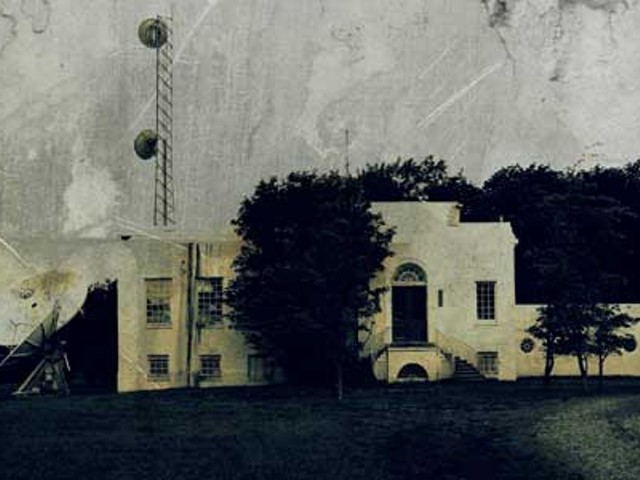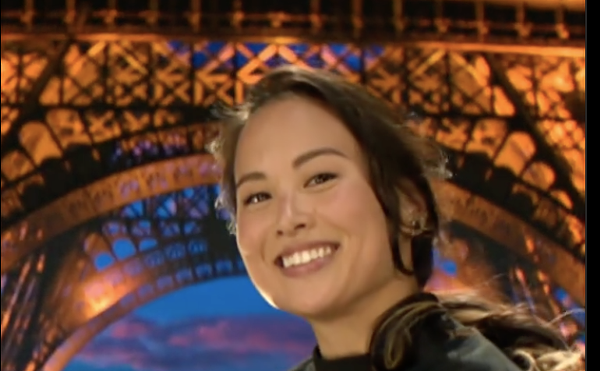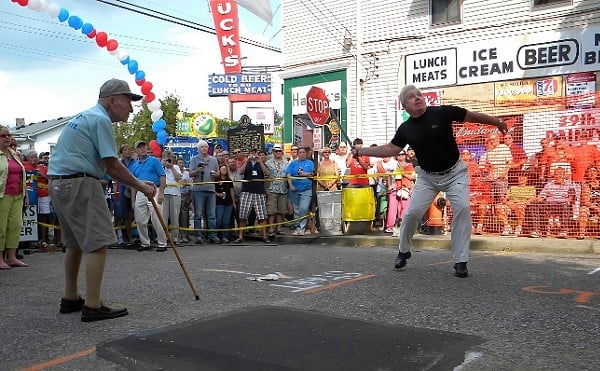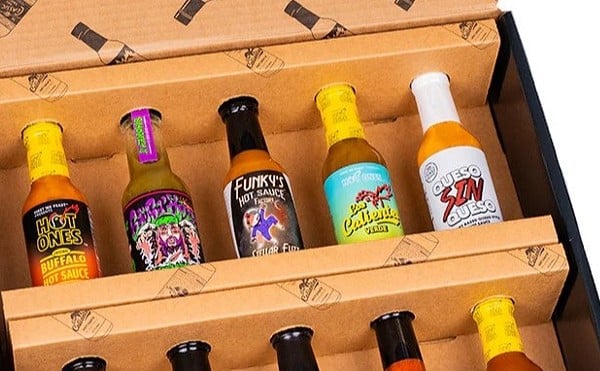LEO Weekly recently caught up with fabled Kentucky storyteller Ed McClanahan over lunch at Lynagh’s Pub in Lexington and over the phone while McClanahan vacationed off the coast of Georgia. These spirited talks covered his relationships with other Kentucky writers, his role in the 1960s California counterculture, and, of course, his much lauded fiction, nonfiction and partly fiction stories.
LEO: This month, Counterpoint will publish “I Just Hitched In From The Coast: The Ed McClanahan Reader.” The new collection contains a substantial body of work. You must be extremely proud. Looking back, do you have an all-time favorite?
Ed McClanahan: My all-time favorite piece of work is the novella “Finch’s Song: A School Bus Tragedy,” the final story appearing in this collection. I spent my year on the Stegner Fellowship at Stanford, 1962-63, writing it. That version was about 135 pages long in manuscript, and it wasn’t very good. But I couldn’t let loose of it — or it wouldn’t let loose of me — and for the next 35 years or so I tinkered with it more or less obsessively, until I finally got it right. So I figure I “un-wrote” this story at the rate of about one page a year for 35 years. As you can probably imagine, it was a great satisfaction to me to publish it in 1996 in my book “A Congress of Wonders.” I think it’s the best thing I ever wrote.
LEO: Speaking of the coast, how important was your providential stint in California, at such a pivotal time in American history, to the ultimate development of your voice as a writer?
EM: I’ve often said that I had to get away from Kentucky to write my novel, “The Natural Man,” but I had to come home to Kentucky to write it well. I was out West from 1958 to 1976, but during all that time, I strove hard to maintain my Kentucky accent and identity, even as I was Californicating madly — or getting Californicated — all the while. So, I think the return to Kentucky was inevitable, and I’m eternally grateful for it.
LEO: Most people don’t realize that you were responsible for the initial contact with Tom Wolfe that resulted in “The Electric Kool-Aid Acid Test.” Was there a reason that you pitched it to an outsider rather than enlisting, say, Gurney Norman or Ken Babbs, or just chronicling the adventure yourself?
EM: I had been reading Wolfe’s Esquire pieces, especially, “The Last American Hero Is Junior Johnson. Yes!” And I kept thinking that his snap-crackle-pop style was perfectly mated to what Kesey was up to. It was all just so … American, you know? So when I found myself sitting across the dinner table from Wolfe’s (Farrar, Straus & Giroux) editor, Henry Robbins, who was also my editor at the time, it just naturally came up in our conversation.
LEO: I guess a somewhat related question would be, in the midst of so much fun, was it hard to actually get any writing done?
EM: Yeah, those times were not conducive to great productivity, fer sher (sic). My fiction pretty much stalled out completely for a long time, but on the other hand there was so much interesting stuff going on to write nonfiction about that I hardly missed it at the time. I started doing what I called “personal journalism” pieces, first for local underground and countercultural publications, later for Esquire, and then for Playboy; so I managed to keep the torch a-flickering. But the fiction was always at the back of my mind, and finally, in 1983, I published the novel, “The Natural Man,” that had got me the Stegner Fellowship at Stanford way back in 1962.
LEO: After Ken Kesey’s death in 2001, you were chosen to assemble the superb literary tribute, “Spit in the Ocean #7.” How did you decide what to include or who to solicit for contributions to that volume?
EM: I loved editing “Spit 7.” It turned out to be exactly what I’d hoped for: an admixture of work by real professional writers: Hunter Thompson, Larry McMurtry, Wendell Berry, notable non-professionals: Gus Van Sant, Bill Walton, and just regular folks, people who had known Ken personally and cared about him as a friend, along with a few who hadn’t known him at all but had simply loved him from afar. And then, of course, there’s a good deal of Kesey’s own writing thrown into the mix, most of it stuff that had been obscurely published or had never been published at all. Orchestrating it all was challenging, but ever so much fun at the same time — especially with the help of my friend and cohort Tom Marksbury, who is also my editor on “I Just Hitched In From The Coast.”
LEO: Your descriptions of the early Grateful Dead, particularly in that legendary Playboy piece, are classic. And not at all what you’d expect to read about the greatest psychedelic rock band in the land. For instance, there’s you and Jerry Garcia weeping along with Robert Hunter as the needle hits the inner groove concluding a gut-wrenching Dolly Parton record. And the softball game between the Dead and the Jefferson Airplane has to be one of the Bay Area’s greatest moments in sports, right? So, I guess the question is why, after the success of that story, did you shy away from music journalism?
EM: The Grateful Dead piece was a great challenge for me, mostly because, frankly, I have a tin ear and don’t know a damn thing about music, much as I love it. What really interests me are the personalities of the musicians, especially as they seem to me to be revealed in their performances, but also in their “off-camera” appearances — as in, for instance, the Grateful Dead-Jefferson Airplane softball game, or the Garcia/Robert Hunter/Dolly Parton moment you mentioned. But I did write one other important, to me, at least, piece of music journalism, namely my 1974 Playboy story about Lexington, Kentucky’s own Little Enis, the self-nominated “World’s Greatest Left-Handed Upside-Down Guitar Player.” Enis was a marvelously compelling character, and my story about him was a milestone in my career and even in Enis’ all-too-brief career as well. The story is featured in “I Just Hitched In From The Coast.”
LEO: You mentioned that you ran into fellow Kentuckian Hunter S. Thompson for the first time at Kesey’s house in La Honda. Were there subsequent times that your paths crossed while you were riding the visiting lecturer circuit out West?
EM: I was only in Hunter’s company one other time, but it was a doozey! When I was teaching at the University of Montana in 1974, I was asked to introduce him when he came there to speak. His “speech” quickly degenerated into a semi-coherent ramble about motorcycles — needless to say, Hunter was already in his cups — but afterward, he and my then-wife Cia and I went out on the town and made a gloriously bibulous and celebratory night of it till about 4 o’clock in the morning. Hunter was a very sweet man, beneath all the surface bluster. Cia still talks about what a gentlemen he was.
LEO: Your relationship with other Kentucky writers was obviously more substantial and profound. Can you speak to that and tell us while you’re at it what exactly constitutes an elastic trapezoid?
EM: Wendell Berry, Gurney Norman, James Baker Hall, Bobbie Ann Mason and I were all at UK in the mid-1950s, and we all had the same great creative writing teachers, Bob Hazel and Hollis Summers. Then in the late ’50s/early ’60s, Wendell, Gurney, Jim — now the late Jim, alas — and I each had Wallace Stegner Fellowships in creative writing at Stanford. For the next several years, the four of us banged around, separately, all over the known world — Seattle, New York, Connecticut, Europe, Montana, Oregon, hither and yon — but we managed to keep our brotherhood intact — the Kentucky Mafia, they had called us at Stanford. An elastic trapezoid if ever there was one.
LEO: As part of the promotion for your anthology, you will be doing some joint readings in the region with fellow Prankster Ken Babbs, who also has a new book to plug. How did that come about? And where can we catch your act?
EM: Ken Babbs and I didn’t meet till 1964, but we’re both alums of Miami University in Oxford, Ohio. Babbs had been Kesey’s best friend since they met in a Stegner creative writing class in the fall of 1958. Babbs subsequently joined the Marines and became a helicopter pilot in Vietnam. During his time there he wrote a novel, which was never published. He mustered out in 1964 and immediately became Kesey’s right-hand man and trail-boss on the fabled 1964 bus trip to New York, and they remained inseparable comrades until Kesey’s death in 2001, after which Babbs again took up his old novel, now titled, “Who Shot the Water Buffalo?” It was published this past spring, to rousing acclaim. He and I are returning to Miami, our alma mater, to read together and make classroom appearances, etc., on Oct. 10-11, and we’re also reading together at Morris Bookshop in Lexington on Oct. 12. I expect them both to be grand occasions. I will also be in Louisville on Nov. 12 reading as part of the Tin Can Buddha show at Kentucky Center For The Arts.
Counterpoint Press will publish “I Just Hitched In From The Coast: The Ed McClanahan Reader” later this month.
The Kentucky author will discuss the collection of stories at 7 p.m. on Oct. 12 at Morris Bookshop in Lexington, 882 E. High St. He will stop in Louisville next month for a reading on Nov. 12 at the Kentucky Center for the Arts, part of the Tin Can Buddha concert.
For more information, visit www.edmcclanahan.com.





